Renew Your USEA Membership for the 2023 Season Today LEARN MORE
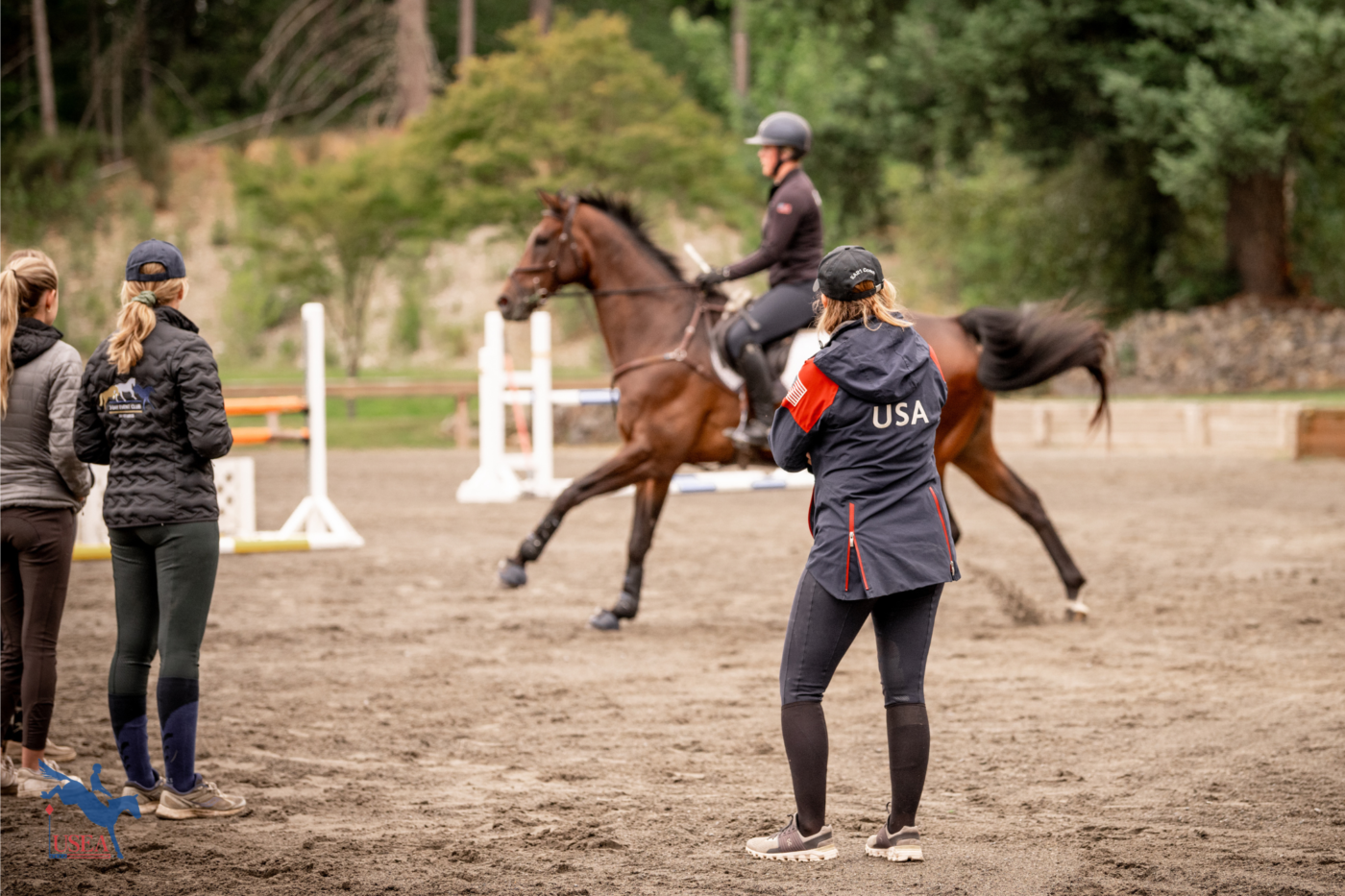
A good canter with a consistent rhythm was the key to success during day two of the USEA Emerging Athletes U21 (EA21) West II regional clinic at Aspen Farms in Yelm, Washington. During the morning lecture that kicked off the day's educational activities, Brown recounted a lesson that she was taught by U.S. show jumper and Olympic gold medalist, Joe Fargis, that "there is no smoke and mirrors in riding. If you sit on the horse well, the horse will go well. Simpler is better." Brown built on this theory throughout the day, consistently returning to the reliance on the flatwork to find success over the fences.
The rider's body position needs to change for each phase, and Brown started the unmounted session by reviewing the three positions that should be utilized during show jumping: a light seat, a full seat and two-point. "This is so hugely important, but you may not realize how much your position can affect your horse in terms of the balance," stated Brown. "If you don't change your pelvis, you're behind the motion. You're not in balance. You've got to come forward to stay over your foot. Even when you are in a full seat, you must not rotate back."
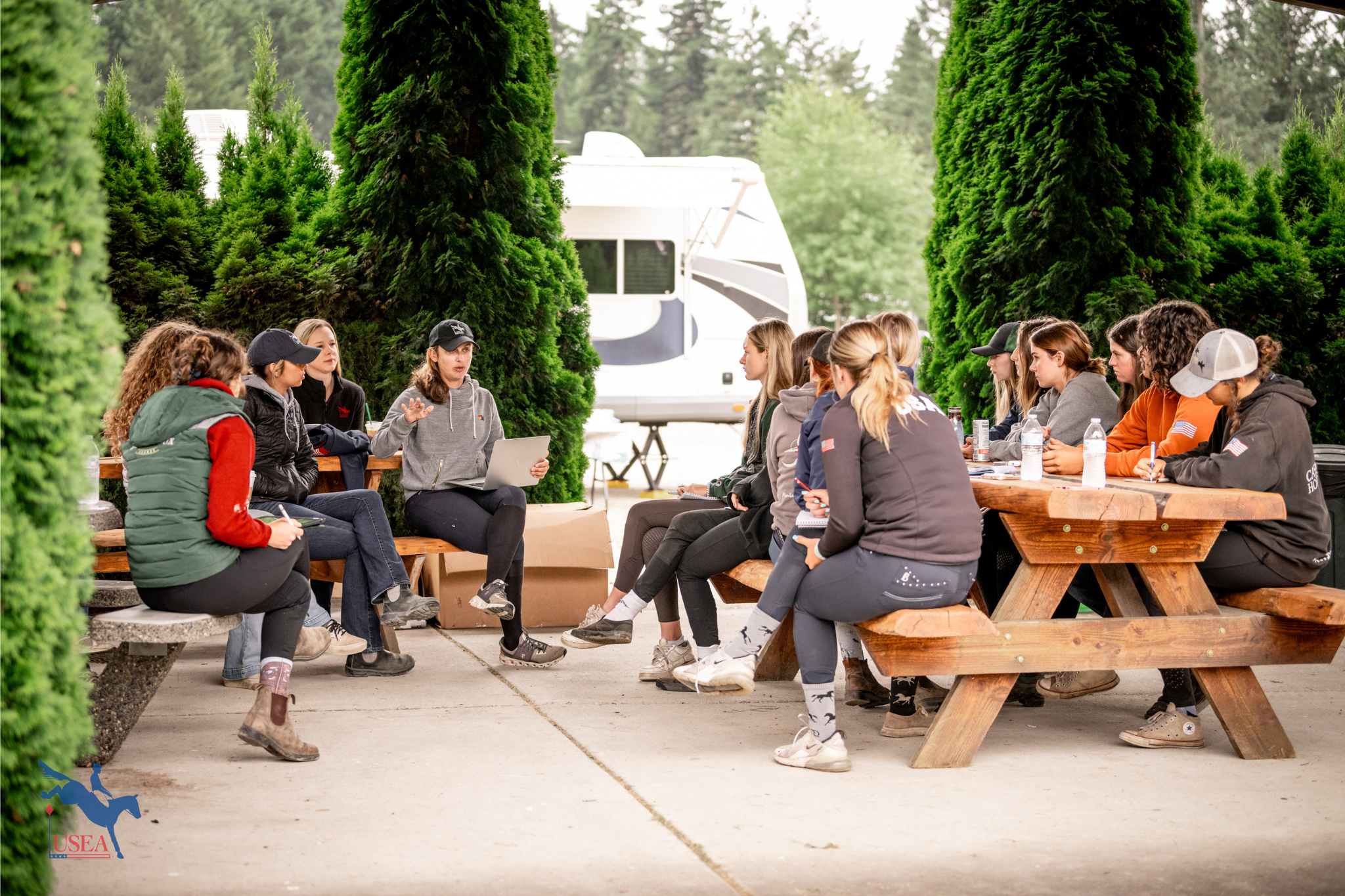
Brown continued by explaining that if you want to be truly competitive in eventing, that you have to study all three disciplines. "I think in show jumping, some people don't take the change of position seriously enough. If you watch the warm-up at big Grand Prix, those horses could win a third-level dressage test." Brown continued by explaining that as the riders prepared for their lessons later in the day, they should warm their horses up very similarly for show jumping as they did for dressage, because they have to get their horses supple and through, so that when they shift their balance for the jump, they are still using their backs.
As the unmounted session wrapped up, Brown closed by urging the group to come to their lessons prepared to warm-up with the right amount of effort and focus. "I guarantee that if you're having an issue in show jumping, it is still always related to the flatwork."
The first lesson was made up of Kayla Dumler, Harper Padgett and Lizzie Hoff, three participants that were paired with horses that were more advanced in their training and prepared to jump larger fences. After their warm-up, Brown started the lesson with two housekeeping items that she would later repeat to every group she taught. "Step one is a good canter, and step two is a good point of turn," Brown explained. "It is always a good goal to approach a turn and be ready to balance the horse on all four legs on the first stride after the turn."
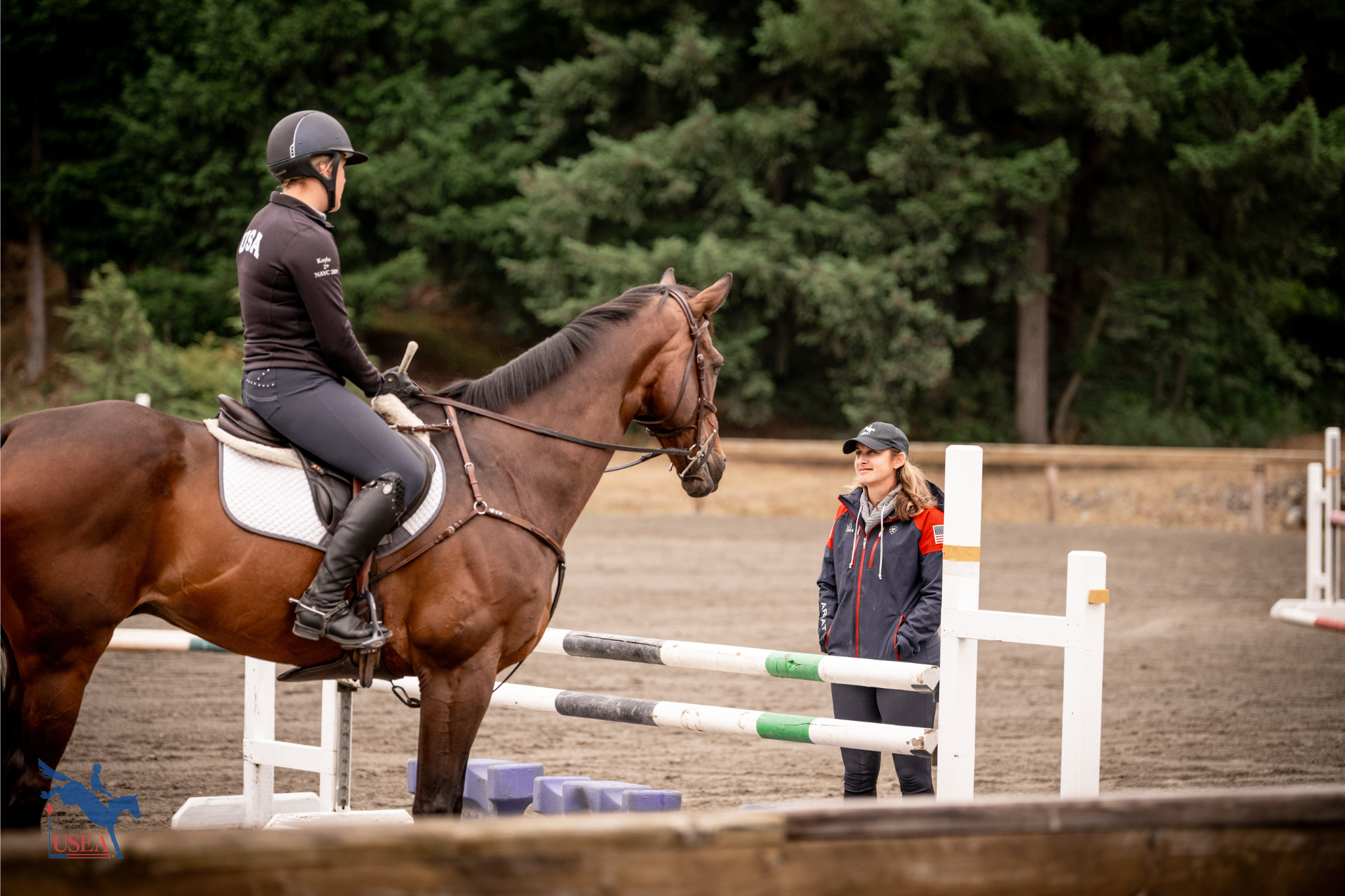
Brown then sent the participants out on a figure eight exercise that included a vertical and an oxer and encouraged them to ride square turns in order to ensure straightness and balance as they approached each fence. As the riders navigated the exercise, Brown identified the turns where the rider's reactions may have been too slow and the organization of the horse lagged. "Riding is all about rhetorical questions," she noted. "You should be able to ask yourself 'Could I land and leg yield off of the turn?' You may not need to, but you should have the feel that you could."
The height of the fences was progressively raised throughout the lesson as the pattern was tweaked to allow the riders to develop a consistent, rhythmic canter and continue to finesse the use of their turns.
At the start of the second lesson, which saw Alexa Marandas, Kaylee Petticord, Mylo Ritson and Cat Ritson in the ring, Brown returned to discussing the rider's position and manipulated each participant's lower leg to the correct placement. "Like there are no seat bones, there are more or less no thighs in show jumping. Your calf should be at a 45-degree angle and the balance should be on your big toe. Now your equitation stars," she exclaimed as finished.
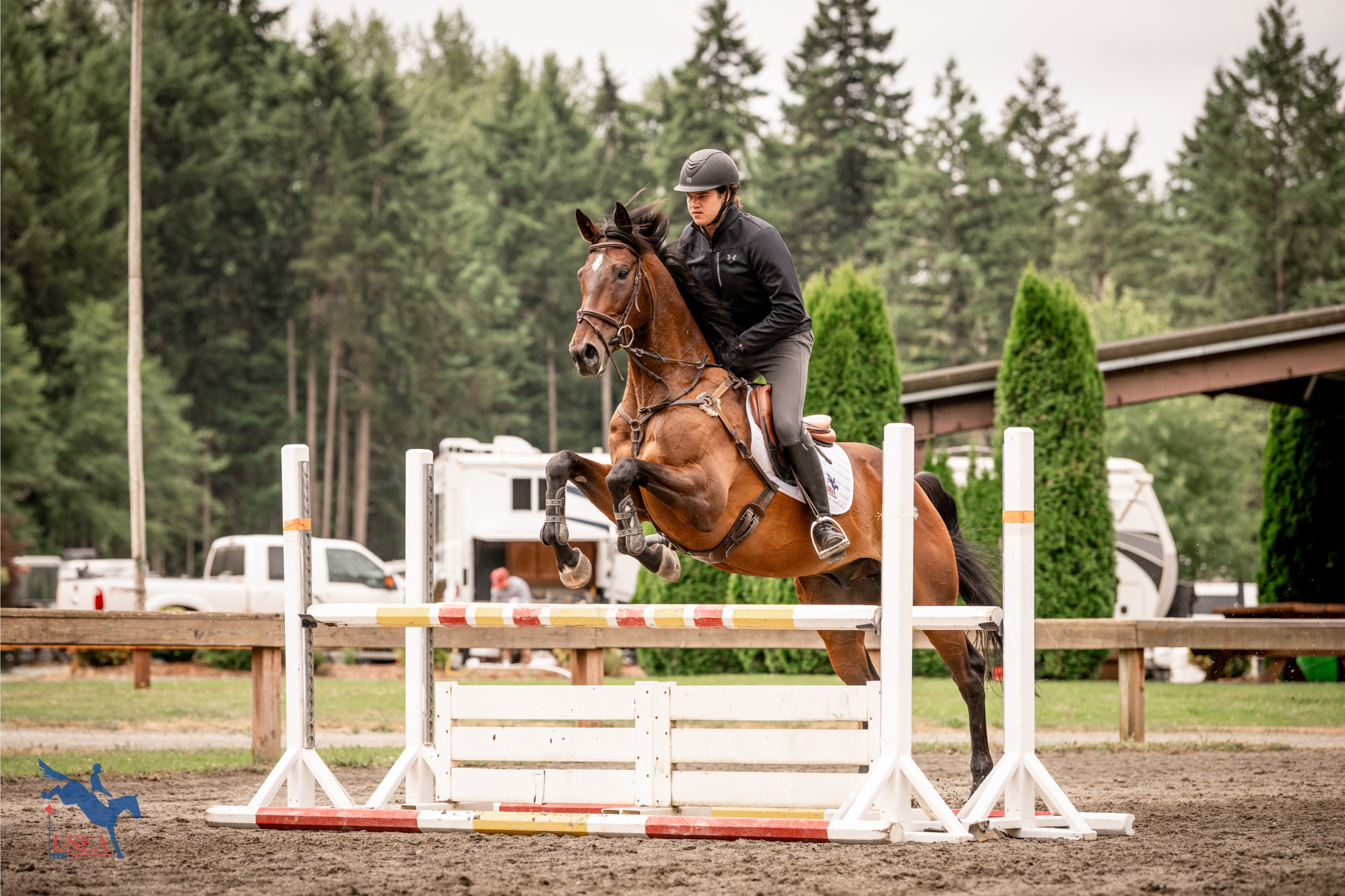
The group was sent out on the same figure eight exercise as the previous lesson and evaluated on the basics of their approach. From the beginning, Brown encouraged Mylo Ritson to lighten his seat in order to increase the effectiveness of his body position. His horse, Cahill Lyon, a 12-year-old Thoroughbred who was previously campaigned by Anna Collier, was full of blood and Ritson struggled to avoid a surge at the fences before takeoff. Brown added placement poles before the fences and between combinations to help Ritson's eye and urged him not to change anything in the final three strides to maintain a consistent canter.
Ritson noted after the lessons that Brown "was able to figure out my horse and me very quickly. She was very effectively able to figure out the best plan for us to keep working on getting better. For as big as this program is, and for never seeing me and my horse before, I was very impressed." Ritson said that finding and keeping a consistent rhythm will be top of mind as he continues in his training.
Kaylee Petticord is in her second year as part of the EA21 program, and she returned to Aspen Farms with her mare All That Jazz, a 10-year-old Thoroughbred. "She's gotten a lot more rideable in the past season," she explained. "It was really cool to see Rebecca notice from last year the differences. Rebecca was right on the money. I am really working on getting her hind end under herself and establishing a real canter instead of just running away." Petticord noted that her experience galloping racehorses has improved her strength and allowed her to better understand her horse. With Brown's help, Petticord was able to establish a good canter and 12-foot stride that let her feel the mare's jump improving over the short lesson.
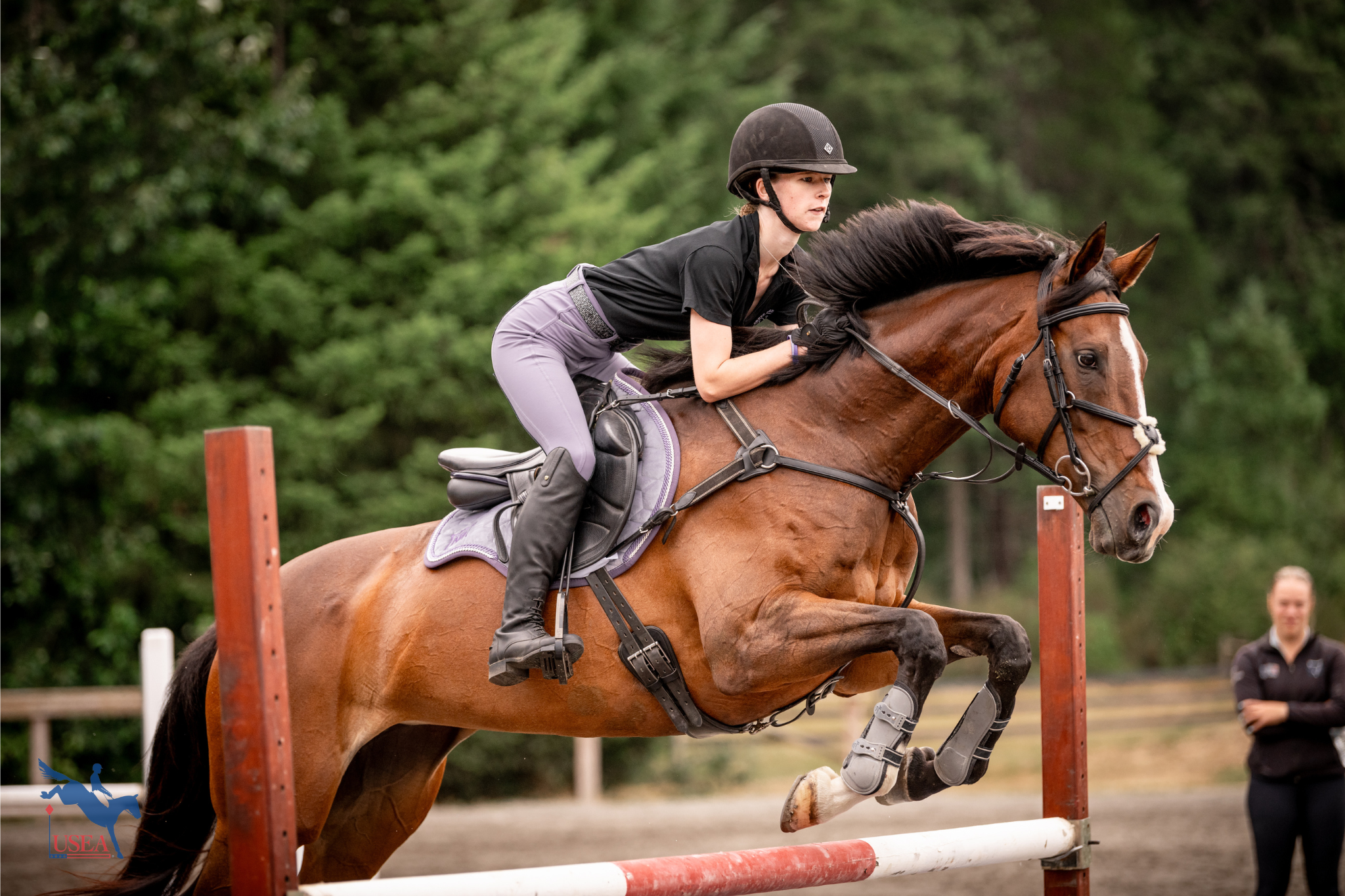
The final grouping saw Natalie Barlow, Lindsay Essex, Madelyn Floyd, Olivia Keye and Alexis Larson enter the ring. This group of riders had younger horses and newer partnerships, which translated to greater learning opportunities. Floyd had only purchased her 5-year-old KWPN mare three weeks prior from a show jumping program, and Brown focused on lifting the horse's balance to allow her to see the jumps before takeoff and improve her shape.
Brown also returned to the exercise that had riders leg yield on the backside of the jump to help Keye improve her point of turn with her 11-year-old thoroughbred gelding, "Alfie." She explained that "the backside of the fence is the front side of the next fence. A good turn and good line, and I'm already set for the next fence."
As the sessions came to a close, Brown thanked the participants for their engagement throughout the clinic and congratulated them once again for the accomplishment of being selected for the EA21 program.
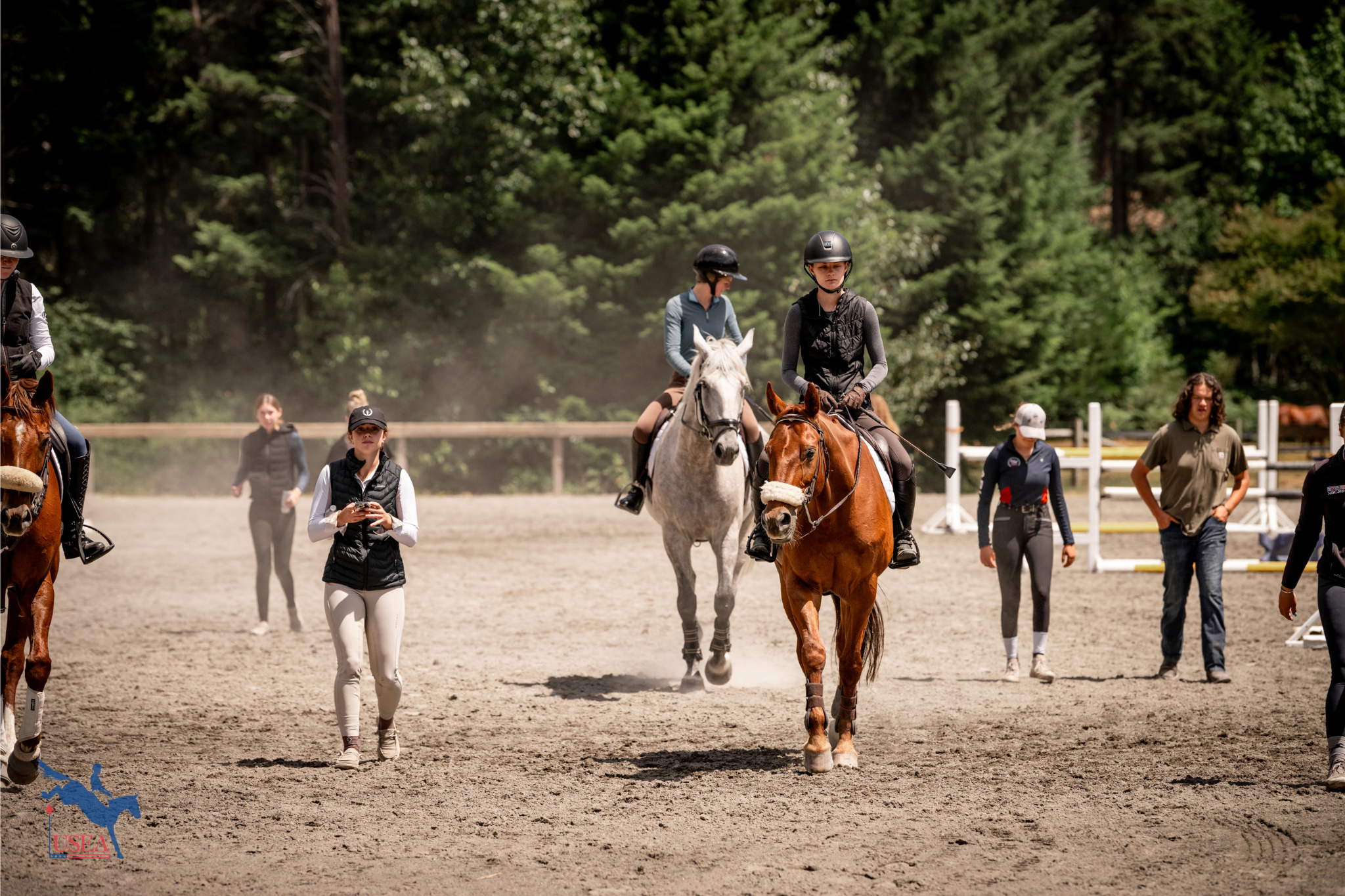
Cat Ritson eloquently summed up her experience at the regional clinic by stating that she "got so much out of the lectures and the lessons, and it was nice to get to know people my age that have the same goals that I have." It is clear that the networking that the EA21 participants are able to access, both with the coaches and their fellow Young Riders, is one of the most impactful aspects of the clinics.
The USEA would like to thank Jonathan Elliot and the team at Aspen Farms, as well as on-site coordinator and Area 7 Young Rider Coordinator, Scott Weide, for their support of the EA21 program this week. The team also hosted the Area 7 Young Rider camp concurrently with the regional clinic, which served as a great asset for the EA21 riders and other campers to co-mingle.
Relive the clinic through the USEA’s coverage on social media!
Facebook | Instagram | Twitter
About the USEA Emerging Athlete U21 Program (EA21)
The purpose of the USEA Emerging Athletes U21 Program (EA21) is to identify and provide consistent quality instruction to the next generation of elite event riders. The aim is to create a pipeline for potential team riders by identifying and developing young talent, improving horsemanship and riding skills, and training and improving skills and consistency.
The USEA Emerging Athletes U21 Program was launched in 2022 with a model of five summertime regional clinics taught by selected USEA Eventing Coaches Program (ECP) instructors, leading to a winter national camp consisting of selected Young Riders from the regional clinics. Athletes who are 21 years or younger, are current members of their USEA Young Rider Area program, and are established at the Training Level or higher, are eligible to apply for the EA21 program. Click here to learn more about the USEA EA21 Program.
The USEA would like to thank Kerrits, Ride iQ, Sidelines